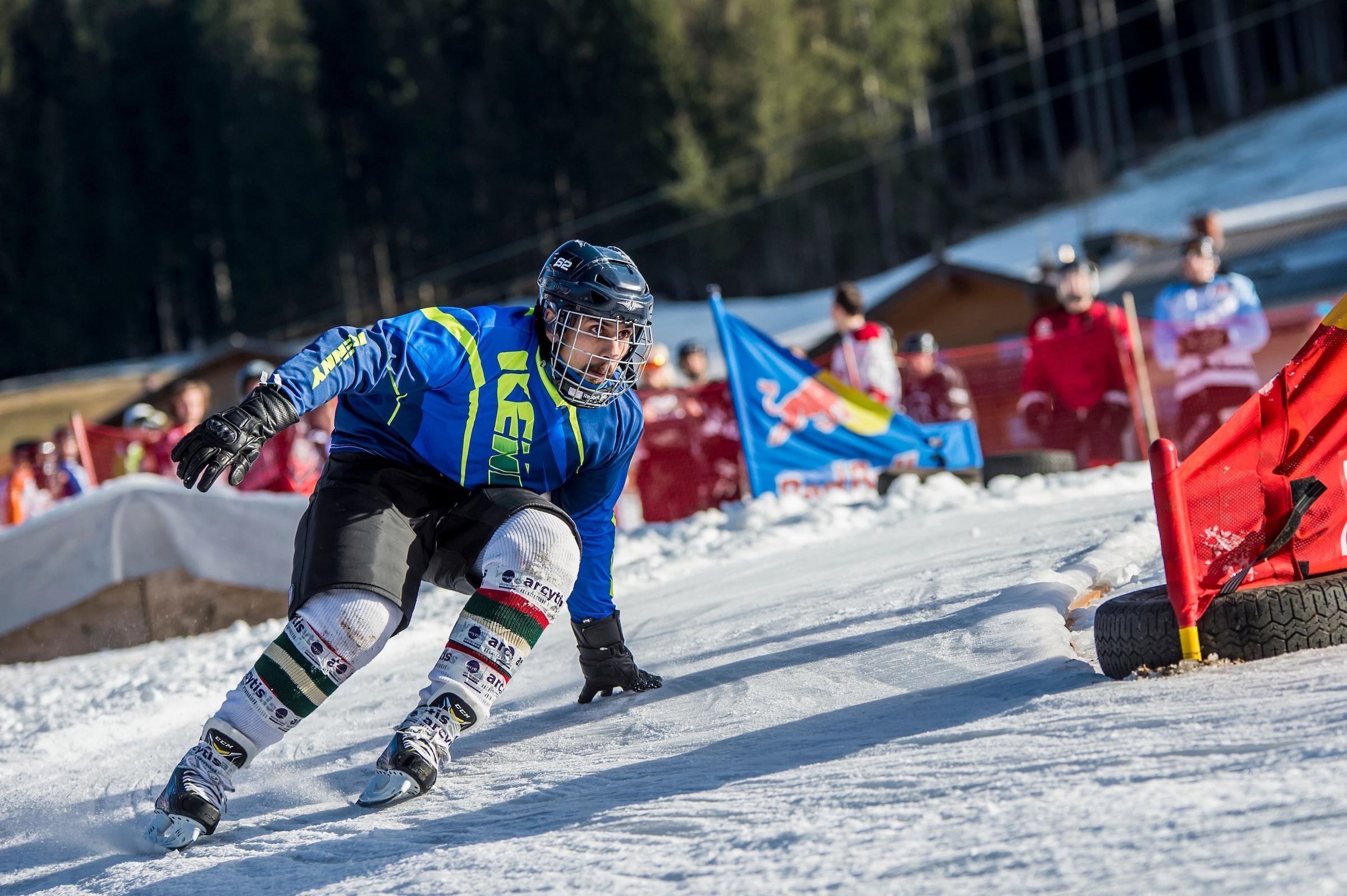Getting into the sport of Ice Cross Downhill has never been easier thanks to the introduction of feeder competitions into the main showcase event -- the signature Red Bull Crashed Ice series that began 16 years ago.
The world's fastest sport on skates has evolved in recent years and become more accessible than ever before for racers of all ages and abilities. A Riders Cup competition launched three years ago has helped many hundreds of athletes from 22 countries and five continents get a taste of the sport while a new Juniors competition started this season which will give many hundreds more a chance to sample the sport, where four athletes at a time race down a specially built ice track of several hundred meters and the two fastest advance to the next round.
"The Riders Cup and Junior competition provide a really good opportunity for anyone who wants to try it," said Christian Papillon, the Red Bull Crashed Ice sporting director. "The registration is open to everyone and get to a Riders Cup race and try to race in the sport. If you're good enough, you'll get into the masters series. For anyone eager enough, there are now lots of opportunities."

The Riders Cup competition has really opened up the sport to many more newcomers in recent years. Photo: Mark Roe/Red Bull Content Pool.
Papillon, who is celebrating 10 years in the sport that has become increasingly professionalized with more and more athletes training year-round, said the number of those competing worldwide has grown from about 150 athletes to about 1,500 over the last five years and that the sky is the limit for the next five years.
"The growth is incredible," said Papillon, from Canada where the sport that combines speed, strength and strategy is especially popular and followed by enormous crowds at races and on television. "It's been enjoyable to see so many young people from countries around the world come into the sport and learn so much about other cultures and other people."
Scott Croxall, the 2015 Ice Cross Downhill World Champion and runner-up in 2016, joined the sport as an 18-year-old in 2009 after watching his older brother Kyle take 20th in the race in Quebec City a year earlier in 2008. Kyle won the 2012 world championship.
"I got into the sport eight years ago, basically because my older brother was competing," said Scott Croxall, who is now 26. "My whole family went to Quebec City to watch and cheer him on. I was 17 at the time and I was there watching and thinking 'This is exactly what I'd like to try to do'. I loved it. The next year I qualified and joined the tour. So here we are."
Croxall and many of the top 64 athletes on the world tour have become professionals, thanks to the prize money to be awarded this season and sponsorships they have developed, a trend that has gained momentum in recent years. Several athletes estimated that it costs about 10,000 euros per year to pay for travel and lodging on the 10-race tour.
"The top 10 can most likely earn enough to live from the sport," said Papillon. "There are about 60 in total who are doing the whole tour and earn enough prize money to more or less cover their expenses as long as they don't live too extravagantly."
American Reed Whiting joined the sport in 2013 as a walk-on. He did a race in Saint Paul, Minnesota and then flew to Switzerland on a whim in a desperate attempt to qualify for the race in Lausanne. He managed to make it to the round of 32 and was hooked. He made it to the finals in several races in following seasons and was a driving force in creating the Riders Cup as well as organizing youth events with 50 to 60 participants in his native Minnesota.
"With the Riders Cup races now anyone can go to any of those races," said Whiting, a former college hockey player. "If you go to a couple of Riders Cup events and get into the top 15 of that competition, you'll get invited to the Red Bull Crashed Ice races the next season. It doesn't get any better than that. It used to be a lot harder to get in."
Whiting said that off-season training at skate parks, BMX tracks and pump tracks are the best way to get better. "What gets you better is going to skate parks," he said. "If you can skate well and can go to skate parks to get used to down hill, you'll get better at this sport."
Pacome Schmitt of France joined the sport three years ago in Lausanne as well. He played hockey in Geneva and skied as well. "I saw this sport on the internet in 2009 and thought it was a perfect mix of the sports I was doing before. When it came back to Lausanne in 2013, I went to a tryout. I fell in love with it and have been doing it ever since."
Schmitt also said the race has become much more accessible for neophytes now. "You just need to spend a lot of time on the ice and a lot of time in skate parts to get a feel of what it's like to go down hill because it's really different from anything else."






